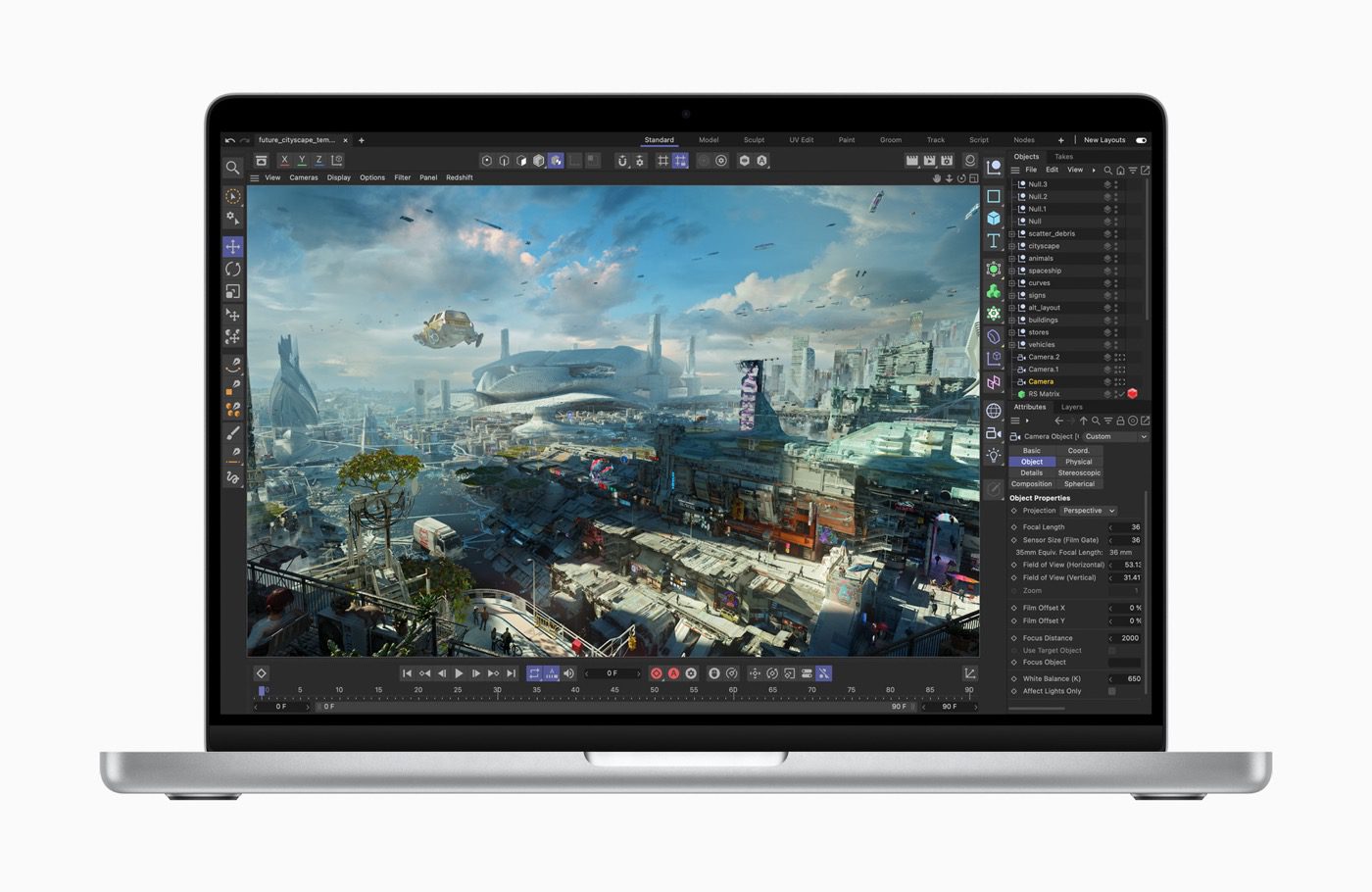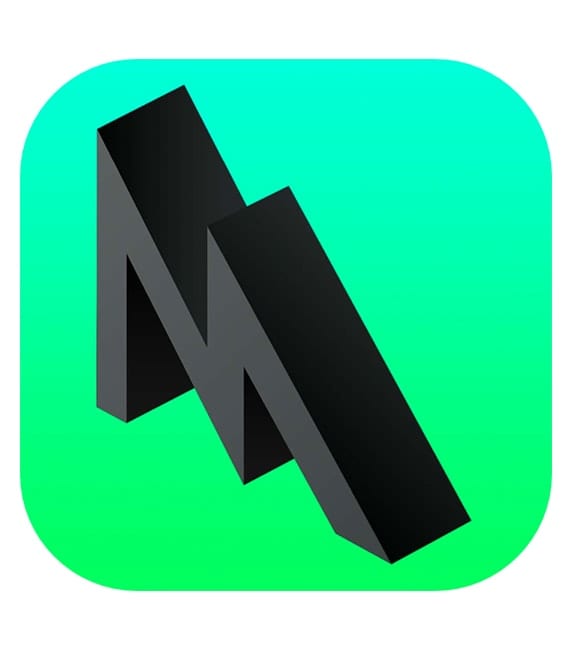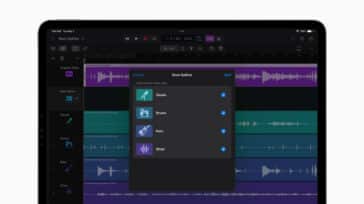Max is the new pro
Apple’s new Macbook Pro was released to near universal praise. The new M1 Pro and M1Max chips are the main attraction. It now looks like Apple labels their top-of-line “max,” as in Airpods Max being higher than the Airpods Pro. And “pro” represents the middle-of-the-line.
But seasoned professionals know that with “new and shiny” usually comes a series of gotchas that can be a total buzzkill when your new kit meets the real world. So let’s dive into the exciting new stuff, and take note about why it might be wise to wait a moment before hopping on board with the new Macbook Pros.
Performance at a price
The M1 Pro chip features up to a 10 core CPU and a 16 core GPU. The M1 Max sports up to a 32 core GPU. Both chips come with oodles of memory and blazing fast storage. Fully specced, you’ll spend over $6,000. Top performance, but just 2TB of storage runs $4,299. At 14” I’m guessing the sweet spot is around $3,299 (10 core CPU/32 Core GPU/32GB RAM/1TB storage).
Any way you look at it, these are expensive machines. These are expensive 1st generation machines. And there’s the rub. New platforms are always exciting. But sometimes they can make you feel like a beta tester. Here’s an example of a video editor struggling with artifacts on his exports with his M1. Those are the kind of things that you’ll most likely avoid on the latest Intel chips.
Gauging Mac vs PC just got harder
If your team works on things like 3D graphics or color grading, you’re probably accustomed to trying to weigh the latest offerings from Apple against NVIDIA graphics-powered PC machines.

These kinds of comparisons just got harder with the debut of Apple’s system-on-a-chip designs. It becomes more difficult because you are asking questions like, “Have the software developers optimized their apps for Apple?” You might wonder if they are using Metal or OpenCL? How does NVIDIA’s CUDA performance compare to Apple’s graphics? What about Apple’s chips vs the AMD GPUs in Apple’s Mac Pro?

Thankfully, there are sites like BareFeats.com, GFX Bench, and GeekBench to help you try to weigh the performance of these different systems against one another. You really have to find the apps that you use the most and look for specific benchmarks to help you make a purchase decision.
For instance, in Apple’s keynote, they demonstrated that the M1 Max outperformed a new Mac Pro with 28 cores and an afterburner card (a card optimized for ProRes), but they didn’t mention the GPU. BareFeats showed a bit of a different story—they said the “M1 Max MacBook Pro only beat the 2019 Mac Pro in 1 out of 8 tests we ran using the newest, fastest Apple GPUs.”
So it’s important to recognize that there’s still a gap between desktop and mobile performance. I know that seems like a no-brainer, but sometimes it’s hard to cut through the marketing speak and get to the facts. When compared to Windows laptops with top-level GPUs, the M1 Max appears to keep pace, and it doesn’t quite destroy them.
Pro motion and calibrated displays
Apple made some interesting points about their new displays. They seemed to recommend that video editors turn off “pro motion” in order to achieve the proper refresh rate in their NLE’s viewers. I can’t help but think that this is akin to turning off “soap-opera mode” on TVs from Best Buy (but hey, some people like it). Personally, I love pro motion on my iPhone 13 Pro Max. I wish the viewer of an NLE would not utilize it, but the UI could.
The new displays also tout new methods of calibration. If you happen to have a $16K scope kicking around, it looks like you can dial in your (at least previous-gen) MacBook Pro display. So it looks like the consensus is that the display is fantastic, but the calibration isn’t precisely spot on out-of-the-box. But you can get it dialed in nicely, if your work demands that level of precision.
App optimization
New hardware is great, but if software makers don’t utilize it, you can feel let down. We all know that Apple’s Final Cut Pro will be optimized to playback ProRes footage on the new machines. But once you step outside of that things are less clear.

Will Resolve and Premiere really milk this hardware for all that it is worth? Will raw codecs like 8K REDCODE play back substantially better? Will After Effects be able to use more than 1 CPU core? (hehe – I kid, Adobe is working on it, but don’t expect miracles right away).
If this sounds like you, my advice is to keep an eye on YouTube for people using your preferred app and the specs that you are considering. Wait for those tests to come out before pulling the trigger.
Honestly, it takes time for the plugin makers, NLE developers, and Apple themselves to work out compatibility. Once the bugs get smashed, then they start optimizing for performance. If you are using this machine to make money, and you buy a first-gen, expect to navigate some uncharted waters while things settle down. Even Dropbox has been trying to figure things out!

Deprecated Kernel extensions
I want to include this section because I feel like there isn’t much written on it. Apple is in the process of deprecating “kernel extensions.” These extensions allow for things like fiber cards, audio interfaces, and file system interfaces to work.
A lot of pros rely on hardware and software that utilizes these .kext files without even knowing it. Each new iteration of Apple’s operating system increases the security of the system. One of these security measures is to deprecate kernel extensions in favor of system extensions.
It’s been a messy process. These new macs will ship with Monterey, so before you pull the trigger, make sure that your critical tools will be compatible. For instance, at our shop, we use Postlab Drive. It is dependent on macFuse. MacFuse isn’t compatible with Monterey, so that means we will hold off on purchasing a new Macbook Pro. So dig into your workflow before making the switch.
Conclusion
Lots more could be said about these powerful Macs. But I hope that we’ve touched on some of the issues that are core to professional users who really push their workflows to the limit every day.
It’s an exciting time to be a mac user, but sometimes it’s tough to keep a clear head and make wise purchase decisions. This is a seismic shift for pro users. What issues are you factoring in before making the switch to Apple silicon?
Our resident filmmaker Jon takes us back to that big day Apple announced these new computers and gives us his take on if these are ideal for creatives.











Thank you for sharing your experience and knowledge, Thank You for Sharing your Blog.it is very helpful. Thank you and good luck with the upcoming Blog.
Can’t get it until all the important programs are compatible and relatively “hassle-free”.
Also, my opinion is to buy with as much RAM as you can afford (to avoid read-write swapping in the SSD) — is this valid?
This headline sure is misleading considering you pretty much just focused on negative “gotchas”. These things are above and beyond awesome, and yes there are some things to consider when upgrading, but you barely touched on what they do well.
Sent from my maxed-out 16″ M1 Max MacBook Pro™
From a still photographer’s perspective, the biggest hassle is waiting for software vendors to catch up. Some companies, like Topaz, have to port all of their products to Big Sur with Intel chips, much less worrying about the M1 Pro. And Monterey is on the way…
One of the things I’ve heard from some developers is that Apple is not helping smaller companies enough with porting their products. I don’t know if people running MS Windows are having similar problems with Windows 11 and new hardware, but I am becoming frustrated with the way Apple treats smaller companies.
Another issue is Apple’s obsession with video at the expense of still photography. None of Apple’s screens even aproach the Adobe RGB (1986) color space. Tim Cook says the displays utilize over a billion colors. But free-standing displays by many companies utilize 16.7 billion colors and cover 99% of the Adobe RGB (1986) color space.
I remain underwhelmed by Apple’s offerings. Don’t misunderstand – I own a 2019 Mac Pro and a Macbook Pro (Intel). So I’m not moving, but I am not nearly as happy as I could be..
You make it sound like a laptop’s built-in graphics keeping pace with top-level graphics cards is disappointing.